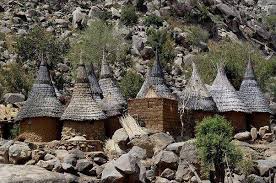Sukur Cultural Landscape , Nigeria
Discover the Mystical Sukur Cultural Landscape: A Hidden Gem in Nigeria
Tucked away in the stunning Mandara Mountains of northeastern Nigeria, the Sukur Cultural Landscape is one of the most extraordinary destinations you might not have heard of—yet. This UNESCO World Heritage Site is a captivating fusion of ancient traditions, sustainable farming, and breathtaking scenery. Are you ready for an adventure that takes you deep into Nigeria’s past? Let’s explore what makes Sukur so unique!
1. The Hidden Kingdom in the Mountains
The Sukur Kingdom dates back over 2,000 years and remains one of Nigeria’s best-kept secrets. Located high in the Mandara Mountains, Sukur offers an immersive journey through time, where ancient customs, royal traditions, and unique architecture have been carefully preserved. If you’re a history buff or simply someone who loves exploring new frontiers, Sukur is a destination you can’t miss!
🏰 Must-See: The royal seat at the top of Sukur Hill, where the chief still governs the kingdom today.
2. A UNESCO World Heritage Wonder
Recognized as a UNESCO World Heritage Site in 1999, the Sukur Cultural Landscape is famous for its exceptional traditional farming systems and stone-built villages. The terraces, paths, and sacred sites that make up this landscape are a testament to the ingenuity of the Sukur people, blending nature and culture in perfect harmony.
🌍 Why It’s Special: Sukur offers one of the best-preserved landscapes that reflects sustainable living and cultural conservation over millennia.
3. Marvel at Sukur’s Unique Architecture
The stone houses and mud huts of Sukur are designed to blend seamlessly with the natural landscape. The traditional terraced farming techniques used by the people here are both practical and beautiful, creating a stunning sight against the backdrop of the mountains. Whether you're exploring the stone-lined terraces or wandering through the stone-built royal courts, you’ll witness how architecture can be both a functional and artistic expression of culture.
📸 Picture-Perfect: The panoramic views of the Mandara Mountains and traditional stone structures offer a photographer’s dream setting.
4. Step Into Sacred History at Sukur Hill
At the heart of Sukur lies the sacred Sukur Hill, where the village’s royal court and spiritual practices have been centered for centuries. Here, you can visit the stone-walled royal compound and learn about the kingdom’s unique governance system. This hill is not just a physical structure; it’s a deeply spiritual place, where the Sukur people believe the gods dwell.
👑 Traveler Tip: Hiking to the top of Sukur Hill provides breathtaking views and a deeper connection to the rich history of the region.
5. The Magic of Sukur’s Farming
The terraced farming systems of Sukur are nothing short of spectacular. Built into the mountainside, these terraces allow the Sukur people to cultivate crops in an environment where the landscape is anything but flat. The sophisticated irrigation and soil conservation techniques are a testament to the ingenuity of the local people and their ability to adapt to their natural surroundings.
🌾 Agricultural Marvel: The terracing is not just functional—it’s an engineering masterpiece that has been perfected over thousands of years.
6. The Cultural Heritage of the Sukur People
The people of Sukur are known for their craftsmanship and cultural traditions. From intricate wooden carvings to vibrant woven textiles, the Sukur people continue to produce remarkable artwork that reflects their deep connection to the land. Visitors can experience this rich cultural heritage through local festivals, music, and traditional dances that celebrate their spiritual and historical roots.
🎶 Cultural Experience: Join the community during one of their vibrant festivals and be a part of the lively drumming and dancing that fills the air!
7. Hiking and Scenic Views in the Mandara Mountains
Sukur’s location within the Mandara Mountains makes it a fantastic spot for hiking and nature walks. The rugged terrain and dense forests offer countless opportunities for outdoor exploration. As you trek up to Sukur Hill or explore the surrounding landscapes, you’ll be treated to panoramic views that stretch across this wild and remote part of Nigeria.
🌄 Hiking Tip: Be sure to bring sturdy hiking shoes as the trails can be steep and rocky. But the stunning views make every step worthwhile.
8. Sustainable Tourism in Sukur
One of the most exciting aspects of visiting Sukur is the sustainable tourism model that supports the preservation of this ancient landscape. By visiting Sukur, you’re contributing to the conservation efforts that help maintain the delicate balance between culture, nature, and the people who call this place home.
🌱 Eco-Friendly Travel: Sukur is an example of how tourism can coexist with local traditions and environmental stewardship.
Best Time to Visit Sukur
The best time to visit Sukur is during the dry season (November to March), when the weather is milder, making it perfect for hiking and exploring the villages. While the rainy season (April to October) offers lush greenery, access to the terraces can be more difficult due to wet conditions.
Getting to Sukur
Sukur may be remote, but the journey is well worth it. The nearest town is Ganye, where you’ll start your journey by either foot or vehicle to reach the village. While the trip may require some effort, the peaceful beauty and rich cultural experience of Sukur make it one of Nigeria's most rewarding off-the-beaten-path destinations.
🚗 Travel Tip: Hire a local guide to help navigate the area and learn about the rich cultural history from the people who live there.
Ready to Experience Sukur?
For adventurers, history enthusiasts, and culture seekers, Sukur Cultural Landscape is a place like no other. Whether you're hiking the Mandara Mountains, exploring the ancient royal hill, or immersing yourself in the traditional arts, Sukur promises a unique journey that will stay with you long after your visit.
Plan Your Trip to Sukur Now!
Ready for an unforgettable adventure? Let FlyAllOver help you plan your trip to the incredible Sukur Cultural Landscape. Discover this hidden gem and create memories that will last a lifetime!


